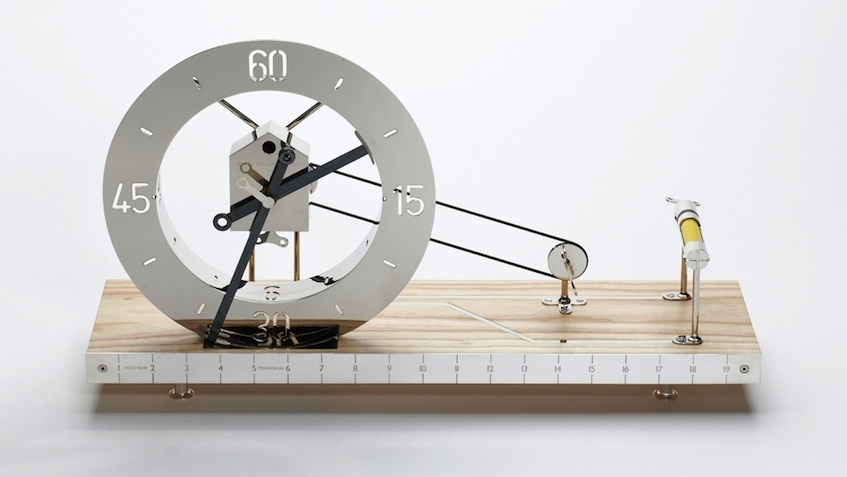Daniel Weil is a partner of Pentagram and a Senior Fellow of the Royal College of Art. Daniel has been working as an architect and designer since 1977 and his projects have included products, packaging, interiors and art direction for such companies as Swatch, Lego, and United Airlines. Recently, Daniel was privately commissioned to create a gift for an architect. The result was a one-of-a-kind clock that is both simple and complex and reflects his interest in investigating not only how objects look, but how they work.
“Objects like clocks are both prosaic and profound,” says Weil. “Prosiac because of their ubiquity in everyday life, profound because of the mysterious nature of time itself. Time can be reduced to hours, minutes and seconds, just as a clock can be reduced to its component parts. This doesn’t explain time, but in a way simply exposes its mysterious essence.”
In addition to being a functional work of art, the clock represents a great example of the role visual management should play in process improvement. While good visual systems don’t explain every detail of a process, they should allow a team see how a process works in real time and help “expose its mysterious essence.” Further, by designing visual management systems which allow the team to see and easily interact with the inner workings of a process, it becomes easier to maintain, repair and improve the process as needed.
Like Weil’s clock, visuals should help explain, very simply, and elegantly, what make’s the process tick. When done well, the blend of visual displays, visual controls and systems design give the team the opportunity to easily see the nuts and bolts of a process as they work the process. Armed with the ability to “see” the process and its problems, teams are better able to both understand what impedes productivity as well as suggest ideas for improvement.
Contrary to the old saying, when it comes to visually management, I don’t just want to know what time it is…I want to know how to build the watch.

